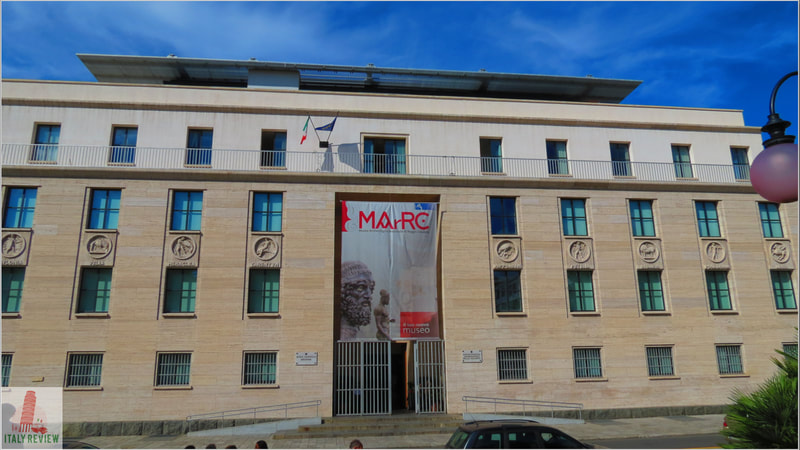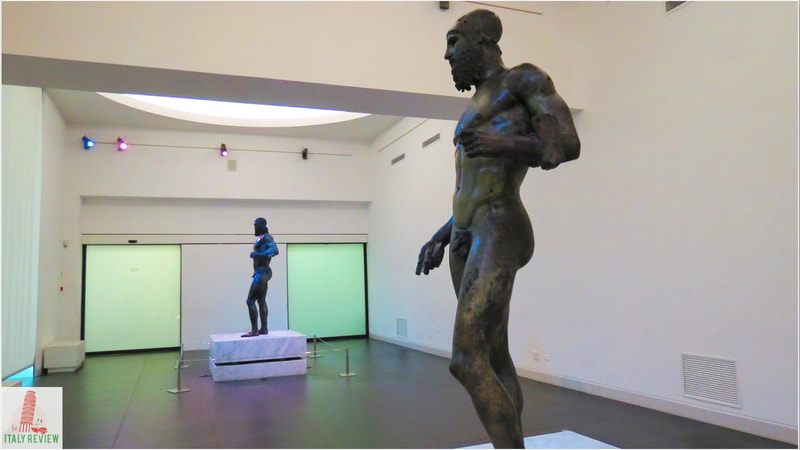National Museum of Magna Graecia
|
By Dion Protani
|
Latest update: 17 January 2024
|
|
The National Museum of Magna Graecia or Museo Nazionale della Magna Grecia was established in 1882 and is situated in the city centre of Reggio Calabria. The museum displays archaeological artefacts from the ancient Magna Graecia region of Southern Italy.
Unquestionably the star attraction of the Museum is the specially-sealed room which contains the famous Riace Bronzes. |
Related links
Profile
The National Museum of Magna Graecia (Museo Nazionale della Magna Grecia) is a prestigious archaeological museum located in Reggio Calabria, a city in the Calabria region of southern Italy. The museum is renowned for its exceptional collection of ancient artifacts from Magna Graecia, an area in southern Italy that was once colonized by ancient Greek settlers.
The museum is situated on the seafront of Reggio Calabria, providing visitors with stunning views of the Sicilian coastline. Its modern building houses a vast and diverse collection of ancient artifacts, offering a comprehensive overview of the region's Greek heritage and the culture of ancient Greek colonies.
The exhibits span a wide range of topics, including pottery, sculptures, coins, jewelry, and architectural elements from the ancient Greek and indigenous Italic civilizations. One of the most famous exhibits in the museum is the Riace Bronzes, a pair of larger-than-life bronze statues of ancient Greek warriors, which are considered masterpieces of ancient Greek art.
The layout of the museum is designed to take visitors on a journey through the history and culture of Magna Graecia, showcasing the influences of Greek civilization on the local culture and the legacy of the ancient Greeks in the region.
The museum is situated on the seafront of Reggio Calabria, providing visitors with stunning views of the Sicilian coastline. Its modern building houses a vast and diverse collection of ancient artifacts, offering a comprehensive overview of the region's Greek heritage and the culture of ancient Greek colonies.
The exhibits span a wide range of topics, including pottery, sculptures, coins, jewelry, and architectural elements from the ancient Greek and indigenous Italic civilizations. One of the most famous exhibits in the museum is the Riace Bronzes, a pair of larger-than-life bronze statues of ancient Greek warriors, which are considered masterpieces of ancient Greek art.
The layout of the museum is designed to take visitors on a journey through the history and culture of Magna Graecia, showcasing the influences of Greek civilization on the local culture and the legacy of the ancient Greeks in the region.
History
The history of the museum dates back to the late 19th century when archaeological discoveries in the area led to the establishment of the museum. The museum was originally founded to house the artifacts from the nearby ancient Greek city of Locri Epizephyrii.
Over the years, the museum's collection expanded, incorporating artifacts from other ancient Greek colonies in the region, such as Sybaris, Kroton, and Rhegion (ancient Reggio Calabria). Today, the National Museum of Magna Graecia is a prominent institution that preserves and showcases the cultural heritage of Magna Graecia.
Over the years, the museum's collection expanded, incorporating artifacts from other ancient Greek colonies in the region, such as Sybaris, Kroton, and Rhegion (ancient Reggio Calabria). Today, the National Museum of Magna Graecia is a prominent institution that preserves and showcases the cultural heritage of Magna Graecia.
Key features
- The Riace Bronzes: The highlight of the museum, these impressive bronze statues date back to the 5th century BC and are considered among the most important examples of Greek bronze sculpture.
- Ancient Pottery: The museum houses an extensive collection of ancient Greek pottery, including vases and vessels decorated with intricate designs and mythological scenes.
- Numismatic Collection: Visitors can explore a remarkable collection of ancient coins, providing insights into the economic and trade relationships of the region during antiquity.
Visitor information
- Opening Hours: The museum is generally open from Tuesday to Sunday. The specific opening hours may vary depending on the season, so it's best to check the official website for the most up-to-date information.
- Entrance Fee: There is an entrance fee to access the museum. Reduced rates may be available for students, children, and seniors.
- Guided Tours: Guided tours may be available for visitors who wish to gain deeper insights into the museum's exhibits and the history of Magna Graecia.
- Accessibility: The museum is generally accessible to visitors with reduced mobility. Elevators and ramps are provided for inclusivity.
Museo Nazionale della Magna Grecia
|
City: Reggio Calabria
Province: Metropolitan City of Reggio Calabria Region: Calabria Established: 1882 Highlights: Riace Bronzes Close by: Scilla, Chianalea, Aspromonte National Park, Bova Recommended accommodation: Hotel Continental |























